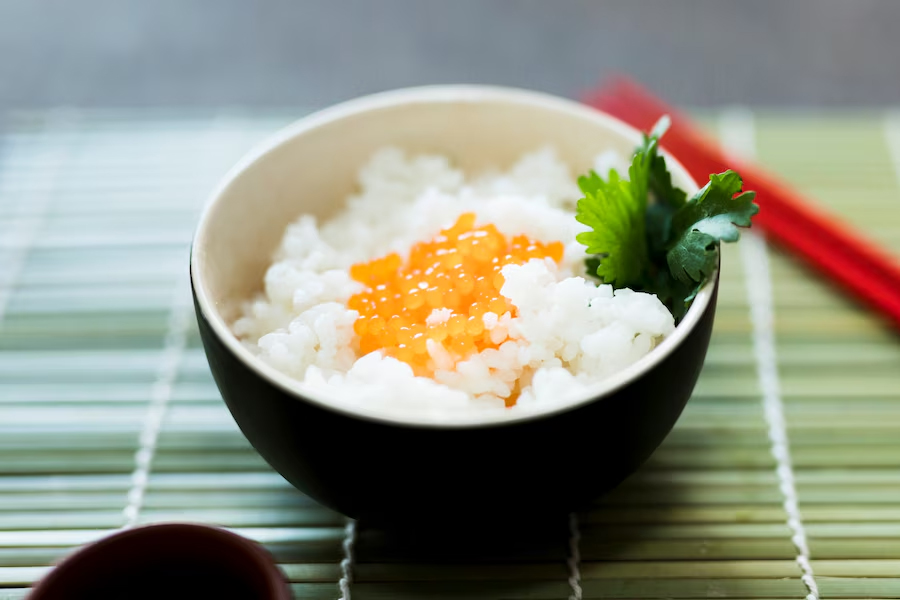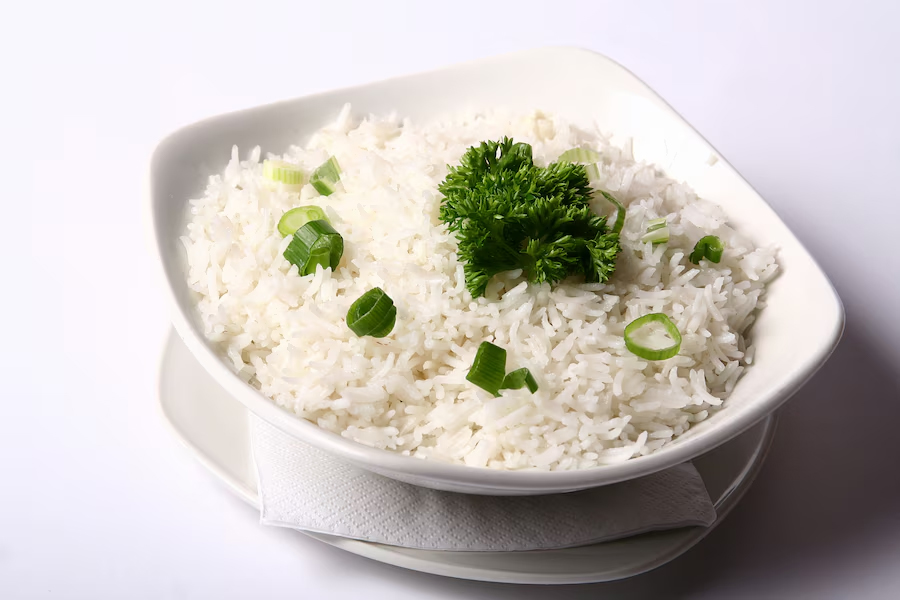
Korean foods like kimbap, tteokbokki, and bibimbap have become a global sensation, with people around the world, including India, developing a great taste for these dishes. Many of these foods feature Korean sticky rice, a staple ingredient that adds a unique texture and flavour to the cuisine. Unlike regular white rice, Korean sticky rice is chewy and has a stickier consistency. But apart from the taste, we asked an expert whether Korean sticky rice also has different nutritional properties compared to regular white rice. Furthermore, we discuss whether it is healthier than the rice commonly consumed in India.
Table of Content:-
Also Read: White Rice Or Roti: What To Have With Your Lentils?
How Is Korean Sticky Rice Different From Regular White Rice?

In an interaction with the OnlyMyHealth team, Dr Preeti Nagar, Dietitian at Noida International Institute of Medical Sciences (NIIMS) College and Hospital, NIU, says, "Korean sticky rice, which is also known as glutinous rice or sweet rice, differs from regular white rice in its texture and cooking properties."
She adds, "As Korean sticky rice has a stickier and chewier texture compared to regular white rice and is more fluffy and separates when cooked, sticky rice also has a higher starch content, specifically a type of starch called amylopectin, which gives it its characteristic of stickiness."
Moreover, she notes that Korean sticky rice is soaked before cooking and requires a bit more water to cook when compared to regular white rice.
How Does Korean Sticky Rice Compare To Regular Rice In Terms Of Nutrition?

Korean sticky rice, or glutinous rice, has an 'equivalent' amount of calories and carbohydrate content found in traditional white rice, says Dr Nagar.
According to Medical News Today, sticky rice generally has a low amylose and high amylopectin content, which is what makes it sticky after cooking.
The health body also mentions that it takes longer for high-amylose rice to be digested, which is why sticky rice, due to its low amylose content, is easily digested. However, the downside is that quick digestion often leads to a faster spike in blood sugar levels.
Additionally, Dr Nagar shares that sticky rice also has a higher Glycemic Index (GI) compared to white rice, making it more harmful for diabetes patients.
Also Read: Can Eating Rice Daily Increase The Risk Of Type 2 Diabetes? Let’s Know From Expert
Can Diabetes Patients Consume Korean Sticky Rice?![]()
According to Dr Nagar, there are no appreciable differences between the two types of rice, especially when it comes to nutritional value. While both are high in energy, they are low in fibre, vitamins, and minerals when compared to whole grains, she notes.
She also mentions that diabetic patients need to be proactive about their carbohydrate intake, which also includes rice consumption.
"Due to its higher GI, Korean sticky rice can cause a rapid increase in blood sugar levels. Therefore, it's advisable for diabetic patients to eat it in a controlled manner. Portion control is essential to maintaining a stable glucose level for a healthy body," she shares.
How To Consume Rice Safely?
Listing a some of the very basic rules for a healthy consumption of rice, Dr Nagar shares:
- Watch portion sizes.
- Always opt for whole grains in your meal.
- Balance your meal with other nutritious foods like vegetables, lean proteins, and healthy fats.
- After consuming rice, always check your blood sugar level.
- In order to slow down the digestion and absorption of sugar, consume rice in balance.
Conclusion
Korean sticky rice is delicious, but it is not the healthiest. In fact, they may be similar to the nutritional value possessed by regular white rice. In addition, diabetes patients should avoid it or consume this type of rice in moderation, as it is high in GI and can raise blood sugar levels. If you’re really concerned about your health, it is best to opt for healthier rice alternatives like brown rice, quinoa, shirataki rice, riced cauliflower, and whole-wheat couscous. While it may take some time to get used to the taste, it can offer several health benefits.
Also watch this video
How we keep this article up to date:
We work with experts and keep a close eye on the latest in health and wellness. Whenever there is a new research or helpful information, we update our articles with accurate and useful advice.
Current Version
.jpg)